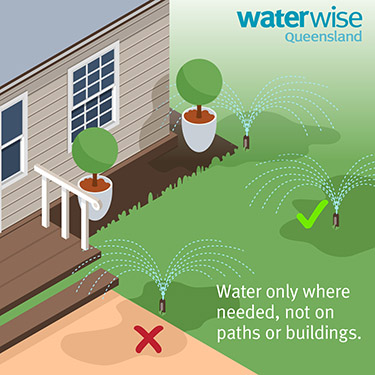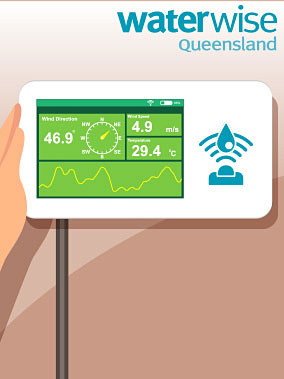Waterwise gardening
Watering
The amount of water your garden needs depends on many factors including:
- location and climate
- plant variety
- soil type and depth
- presence and type of mulch
- amount of wind and shade
- rainfall patterns.
Follow these simple guidelines to save water and enjoy a sustainable, water-efficient garden and check out our hints on watering in this video.


Water smarter
The greatest waste of water comes from applying too much, too often—much of it runs off and never soaks in. Water at a slower rate, for a longer time and less frequently.
Instead of watering the entire garden, just water the plants that need it. Many plants are much tougher than you think and will go for quite long periods without additional watering. This also has the effect of training your plants to be more resilient. Less-frequent watering forces roots down to find water, making the plants less reliant on surface water, and better able to cope with hot, dry days.
Overwatering can cause waterlogging of the soil and can contribute to plant disease. The best way to tell if your garden needs watering is to check the soil moisture. You can do this either by using a soil moisture meter, by digging a hole to the root zone, or using a screwdriver to make sure it can easily go to about 10 cm (100 mm) depth.
Grass may benefit from more infrequent but thorough soakings to encourage deep roots. Trees and shrubs have much deeper and more extensive root systems, so they should be watered less frequently but for longer periods of time.
It is likely your plants need water if the leaves or stems of your plants are droopy, or the edges of the leaves are turning brown, and the soil is dry.
Water early in the morning
Try to water between 5 am and 10 am—when the sun is low, winds are calm, and temperatures are cool. Less water is lost to evaporation and wind during this time. Irrigation in the evening, while there is low evaporation, can lead to fungus growth as leaves can remain wet overnight. By irrigating in the morning, you give the leaves a chance to dry out during the day.
Watch the weather
Before watering, check the weather forecast. If it is about to rain, don’t water. If you have a rain gauge, use it to determine the rainfall received and whether additional watering is needed.
Check with your local water service provider or council about water restrictions and only water your garden when permitted.
Irrigation systems
Your irrigation system should be set up so that it can deliver the right amount of water to the right places.
You should select an irrigation system and emitters that are appropriate for your:
- microclimate
- plant selection
- soil type.
Advice on how to use different irrigation devices and design irrigation systems can be found in the efficient irrigation guidelines (PDF, 6MB). Hear what gardening expert Costa Georgiadis has to say about the guidelines.
You can seek professional expertise on irrigation system design, installation and maintenance from a horticulturist, landscaper, or certified irrigation professional. Advice on plumbing and drainage requirements is also available from your local water service provider or council.
Rainwater tanks
Depending on the typical weather patterns in your area, consider installing a rainwater tank for use in your home and garden — there are shapes and sizes to suit most properties. Further details on selection, installation, maintenance, mandatory requirements and council regulations can be found in the rainwater tanks brochure (PDF, 3.4MB).
Greywater use
Greywater is waste water generated from baths, showers, washbasins and laundries. You can reuse your water by using greywater on your lawns and gardens, however it is important to use it carefully. Check with your local council if council has any regulations for its use. If using greywater on your garden, it is preferable to use biodegradable detergents in the home that are low in sodium, phosphorus and nitrogen; they are better for your garden and the environment. Greywater must be used immediately but avoid using on vegetable gardens, herbs or edible plants.
Find out more
- How to establish and maintain water efficient gardens (PDF, 1.4MB) and active playing surfaces (PDF, 687KB).
- Planning a waterwise garden - YouTube video
- Maintaining a waterwise garden.
- Find out more about the use of greywater and installing a greywater system.

In this guide:
- Previous ( https://www.qld.gov.au/environment/water/residence/use/garden/lawn )


